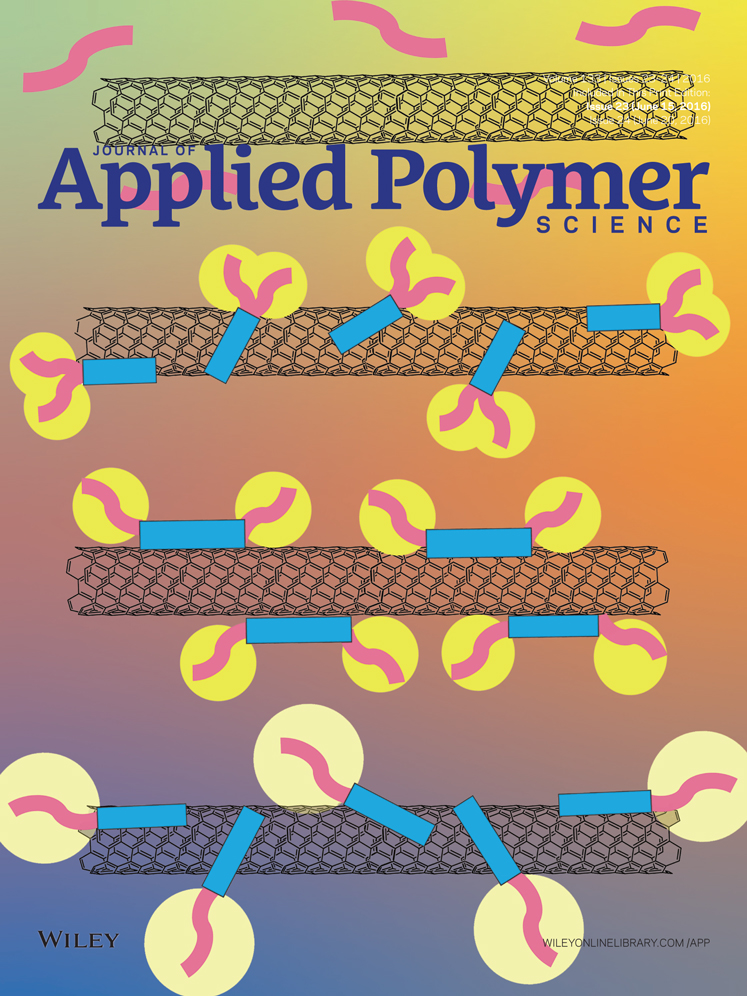Architectural effect of poly(acrylic acid) and poly(amide imide) block copolymers on dispersion of carbon nanotubes in water
ABSTRACT
The dispersion of carbon nanotubes (CNTs) in water by poly(acrylic acid) (PAA) and poly(amide imide) (PAI) block copolymers and homo-PAA is investigated. Poly(acrylic acid)-block-poly(amide imide) (PAA-block-PAI), poly(acrylic acid)-block-poly(amide imide)-block-poly(acrylic acid) (PAA-block-PAI-block-PAA), and heteroarm star block copolymer poly(acrylic acid)2poly(amide imide) (PAA2PAI) with similar molecular weights and PAA contents are used as the copolymers. The dispersion of CNTs is observed by dynamic light scattering and ultraviolet-visible spectroscopy. The presence of the hydrophobic sequence improves the dispersion. PAA2PAI has the best dispersion ability, followed in order by PAA-block-PAI-block-PAA, PAA-block-PAI, and homo-PAA. In the dry state, aggregates of CNT are observed by transmission electron microscopy (TEM) in the mixture with PAA-block-PAI and homo-PAA. The adhesion of the copolymers to CNT is also observed by TEM and is due to the high affinity between hydrophobic PAI and CNT. In particular, PAA2PAI and PAA-block-PAI-block-PAA well cover the CNTs. The presence of PAI and the PAA location are important for the dispersion of CNTs. © 2016 Wiley Periodicals, Inc. J. Appl. Polym. Sci. 2016, 133, 43461.




